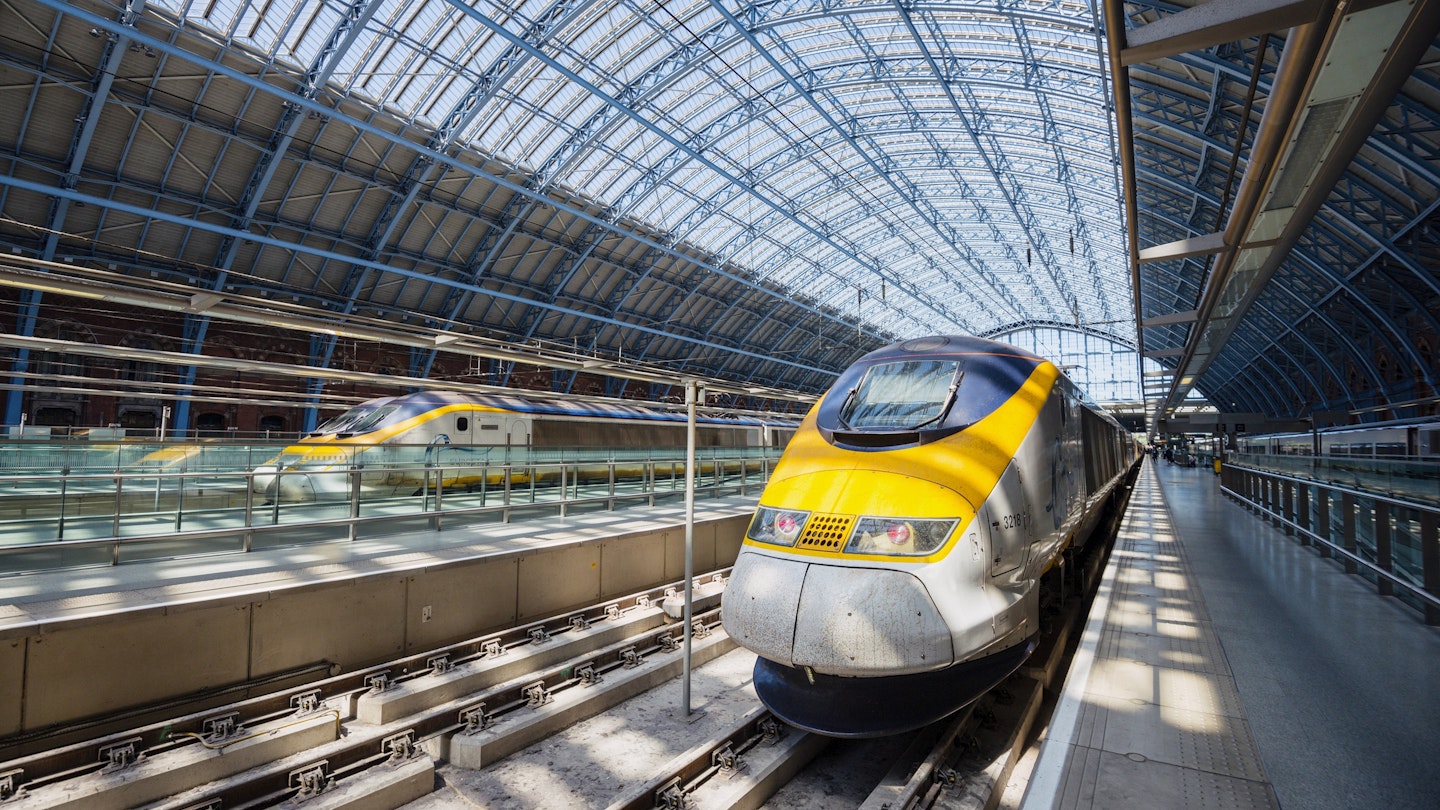Sustainable Travel Options in Europe: Train vs. Plane
As the climate crisis becomes harder to ignore, many travellers are looking for more sustainable options, often eschewing aviation and travelling overland instead. Here, GoTravelDaily takes a look at five popular European routes, comparing cost, journey time, and emissions to help you choose the best transport method.
1. London to Paris
Air travel between London and Paris has nosedived since the first Eurostar chugged under the Channel in 1994. The high-speed railway is an excellent choice for those travelling between the two capitals; once you factor in the airport rigmarole, the Eurostar is quicker than the plane, often with similar prices. The carbon saving makes the fuel-efficient rail service even more appealing.
Cost (one-way)
- Plane: From around £23 with easyJet, excluding seat selection and hold luggage
- Train: From £29 with Eurostar
- Coach: From £11.99 with Flixbus
Journey time
- Plane: 5 hours (allowing an hour each end to travel to and from the airport, plus 2 hours at the airport)
- Train: 3 hours (including 45 minutes at the train station)
- Coach: 8.5 hours (including 15 minutes at the coach station)
Emissions*
- Plane: 54.4kg per passenger
- Train: 2.1kg per passenger
- Coach: 12.8kg per passenger (including Eurotunnel)
Verdict
A quarter of a century after it launched, Eurostar remains the fastest and most sustainable option between London and Paris.
2. London to Amsterdam
London to Amsterdam is one of the world’s busiest air routes; however, Eurostar’s new service to the Dutch capital should change that. Calling at Rotterdam, the train takes approximately four hours but currently operates one-way due to border complications. These complications are set to be resolved, increasing interest in this already popular route.
Cost (one-way)
- Plane: From around £16 with easyJet, excluding seat selection and hold luggage
- Train: From £35 with Eurostar
- Coach: From £21 with BlaBlaBus
- Ferry: From £83 (“rail and sail” fare, includes cabin)
Journey time
- Plane: 4 hours 45 minutes
- Train: 4 hours 40 minutes (return journey around 6 hours)
- Coach: 11 hours
- Ferry: 12 hours
Emissions
- Plane: 56.6kg per passenger
- Train: 3.3kg per passenger
- Coach: 15.4kg (including Eurotunnel)
- Ferry: 9kg (including train transfers)
Verdict
From April, when it runs directly both ways, the Eurostar will become a top choice for eco-conscious travellers.
3. Paris to Milan
The route from Paris to Milan features airfares that can be incredibly low, often on par with a continental breakfast. Yet, for rail passengers, the stunning Alpine scenery enhances the appeal of travelling by train. Thello offers an affordable sleeper service that departs Paris nightly, arriving in Milan the following morning before continuing to Venice.
Cost (one-way)
- Plane: From around £9 with Ryanair, excluding seat selection and hold luggage
- Train: From £22 with Thello (sharing a 6-berth couchette)
- Coach: From £16 with BlaBlaBus and Flixbus
Journey time
- Plane: 5 hours 30 minutes
- Train: 11 hours (Thello); 7 hours 30 minutes (TGV)
- Coach: 13 hours
Emissions
- Plane: 101.8kg per passenger
- Train: 5.1kg per passenger
- Coach: 23kg per passenger
Verdict
Although the plane is the quickest and cheapest option, the train compensates with gorgeous scenery and lower CO2 emissions.
4. Stockholm to Copenhagen
Rail enthusiasts often discuss the “magic five hours,” which is typically how long a train must take before travelling by plane is quicker. The journey from Stockholm to Copenhagen fits that limit at five hours (excluding station dwell time) and features a self-service buffet car. Notably, this was the first service Greta Thunberg took on her overland odyssey to Davos in 2019.
Cost (one-way)
- Plane: From around £38 with Norwegian, excluding seat selection and hold luggage
- Train: From £20 with SJ
- Coach: From £25 with Flixbus
Journey time
- Plane: 5 hours 10 minutes
- Train: 5 hours 30 minutes
- Coach: 9 hours 30 minutes
Emissions
- Plane: 86.6kg per passenger
- Train: 3.9kg per passenger
- Coach: 17.7kg per passenger
Verdict
In the home of flygskam, the Greta-endorsed train is the cheaper and more sustainable option.
5. Madrid to Lisbon
Airlines currently have the upper hand on the Iberian Peninsula, given the formidable scenery separating these capitals. Overland passengers can take Trenhotel Lusitania, a dated sleeper that runs on sections of line still not electrified. Prices are low, and the timings are favourable; travellers can dine in Madrid and arrive in Lisbon just as the first pastel de natas come out of the oven. Adventurous travellers might also consider an overnight coach.
Cost (one-way)
- Plane: From around £24 with Air Europa, excluding seat selection and hold luggage
- Train: From £29 with Trenhotel Lusitania (sharing a 6-berth couchette)
- Coach: From £9 with Flixbus
Journey time
- Plane: 5 hours 20 minutes
- Train: 10 hours 30 minutes
- Coach: 8 hours 30 minutes
Emissions
- Plane: 80kg per passenger
- Train: 28kg per passenger (with some electrified sections)
- Coach: 17kg per passenger
Verdict
It takes a committed environmentalist to take this route by rail or road, which, though slower, is a greener alternative to flying.
*Calculations are approximations, based on data from the Department for Business, Energy and Industrial Strategy (BEIS). According to the BEIS, CO2 emissions per passenger per km are as follows: short-haul flights, 158g; coach, 27g; national rail (unelectrified), 41g; international rail (electrified), 6g; ferry (foot passengers), 19g.





